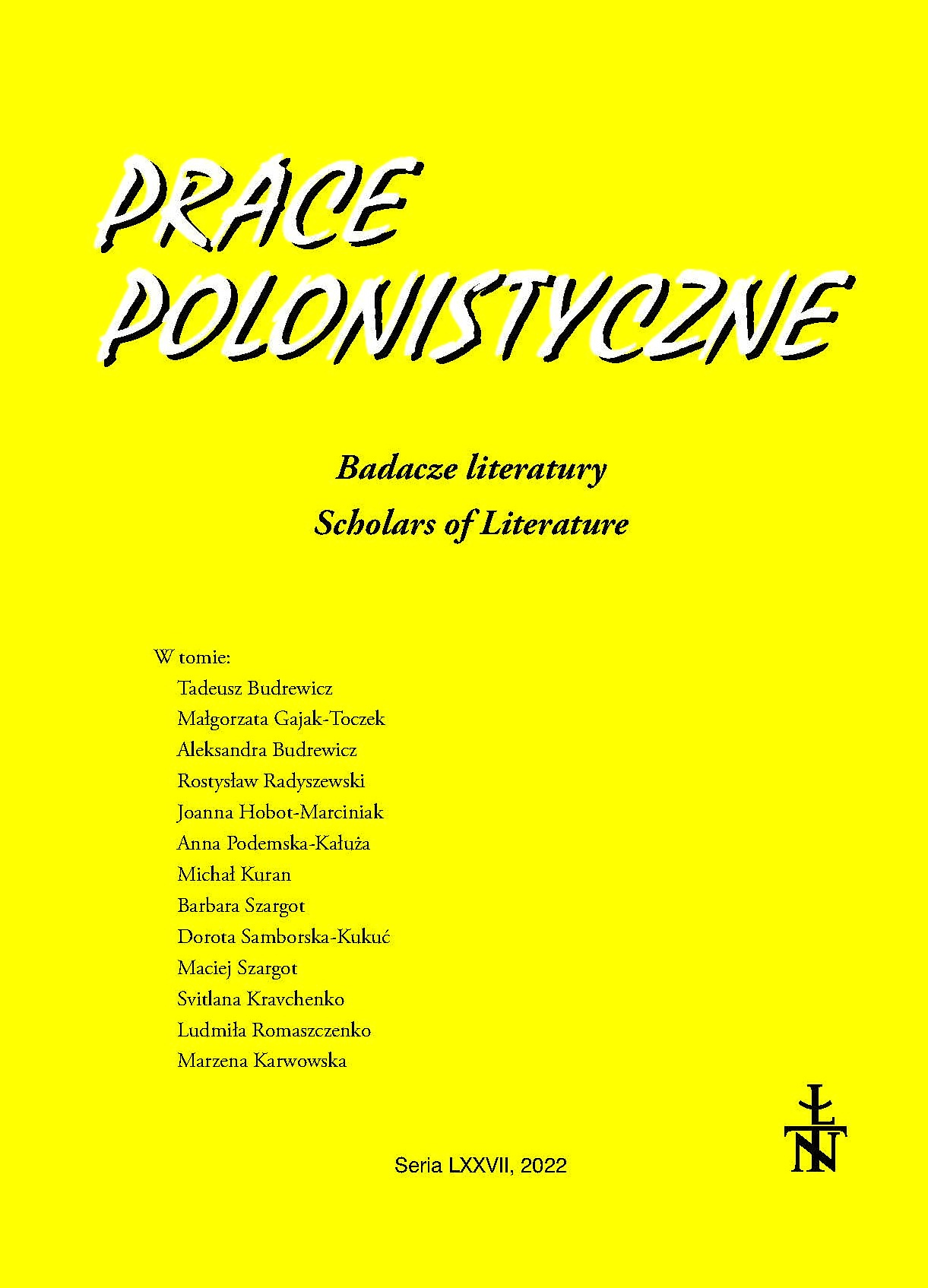MIĘDZY MITEM A KONWERGENCJĄ KULTUR – PUŁAPKA TADEUSZA RÓŻEWICZA
BETWEEN THE MYTH AND CULTURAL CONVERGENCE – TADEUSZ RÓŻEWICZ’S THE TRAP
Author(s): Marzena KarwowskaSubject(s): Polish Literature, Philology
Published by: Łódzkie Towarzystwo Naukowe
Keywords: Tadeusz Różewicz; The Trap; Gaston Bachelard; Gilbert Durand; mythocriticism; myth; symbol; anthropological structures of the imagination; cultural convergence; cultural pluralism;
Summary/Abstract: Tadeusz Różewicz’s drama The Trap has rarely been examined by scholars of literature. Most texts written about it are reviews of its theatre productions. The Trap can be interesting for the studies of literary intertextuality, as it makes frequent references to Kafka’s oeuvre. Różewicz himself frequently spoke of his obsession with Kafka, whom he called one of the saints of literature and an artist with whose works he had a lasting, dialogic relationship. It seems, however, that the intertextual dialogue with Kafka is not the main theme of The Trap, but rather a pretext to address more universal problems. Centra to the play is its symbolic and mythical dimension which resonates with a wider context of cultural convergence. The article discusses cultural convergence and the symbolic and mythical imagination in connection to Gilbert Durand’s concept of cultural pluralism. Durand perceives a literary text as based on a symbolic plot – diachronically dispersed myths and symbols, which form a suprahistorical and supracultural anthropological path. The article addresses such concepts as: the imaginative deformations of the chronotope, the mythologem of the house, the transposition of the myth of the scapegoat, and the symbolic and mythical aspect of presentation. The eponymous “trap” is often interpreted as a trap of history and memory. Yet, the character created by Różewicz is not trapped solely by the past. The symbolic and mythical dimension of the play conceals another – more fundamental – anthropological traps of existential fear and of being confined by love, by the family, by everyday life, and by daily chores. These traps are represented by Felice, Mother, Father, and the symbolic attributes of marriage: the wardrobe, the bedroom, the bed, and the table, which terrify Franz. In the anthropological sense, the human being presented in The Trap experiences an incessant katabasis (symbolized by the basement and the shoemaker’s workshop, from where the characters fearfully observe the world through the window, but never become its part, or by the slow descent downstairs). He needs to dig underground labyrinths, as he struggles to survive under the surface of everyday life, hiding from the terror of history and the terror of social relations, which violate his freedom.
Journal: Prace Polonistyczne
- Issue Year: 2022
- Issue No: 77
- Page Range: 233-247
- Page Count: 15
- Language: Polish

